149
A boat owned by Vincent Faulkner.
1918
Spencers Point, Nova Scotia, Canada
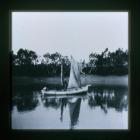
150
A boat of unknown origin is shown here.
151
Bernard Taylor left and Stanley Cochrane with an unknown boat.
1945
Highland Village, Nova Scotia, Canada
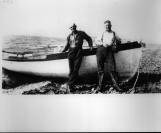
152
The builder of this boat is unknown, as is its name.
153
Hanging and repairing nets.
1958
Spencers Point, Nova Scotia, Canada
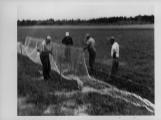
154
Where ever boats were moored net horses were erected to dry nets between sailings. Originally in the eighteenth and nineteenth century, nets were made of linen and were often knit at home by the fishermen's wives. Later with the development of synthetic fibers, fishermen switched to nylon. Linen nets had to be dried and tanned regularly. The introduction of nylon nets lessened the work load considerably.
Isabel Hennessy Horne remembers her mother and father kniting net in the winters. Her dad always referred to his nets as "bunches" and on May 22,1901, in his diary he spoke of oiling a new bunch of net.
155
Harold Cooke hanging net.
1958
Spencers Point, Nova Scotia, Canada

156
Every spring, nets had to be inspected and repaired.
157
Spencers Point net horses.
1958
Spencers Point, Nova Scotia, Canada
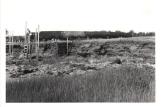
158
As mentioned, net horses were a common sight wherever boats were moored. A ladder up the steep embankment provided access to the horses.
159
Harold Cooke in Shamrock.
1958
Spencers Point, Nova Scotia, Canada
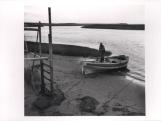
160
From the net horses the nets were loaded into the stern of the boat which we see Harold Cooke doing. Note the floats on the nets to mark their position in the water and the larger black steel drum which is also used to mark their position. Oars are evident, as well as the mast on the rail of the boat. We can also see the mooring lines. Most boats were tied to three posts.
161
Atlantic Salmon
1958
Highland Village, Nova Scotia, Canada
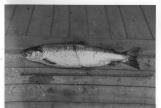
162
A by-catch of Atlantic salmon was commonplace to the shad fishery.






